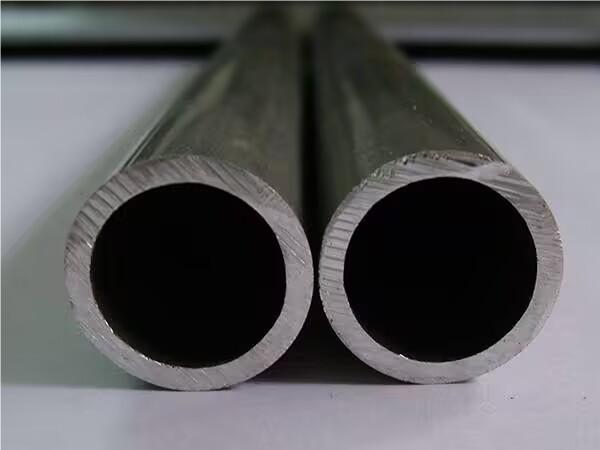Advantages and disadvantages of hot rolled seamless steel pipe
Hot-rolled
seamless steel pipe is a kind of non-weld steel pipe made by perforating the whole round steel. According to different production processes, seamless steel pipes can be divided into hot-rolled seamless steel pipes, cold-rolled seamless steel pipes, cold-drawn seamless steel pipes, extruded seamless steel pipes and pipe jacking and other types. Among them, the hot-rolled seamless steel pipe is rolled above the recrystallization temperature of the metal, and the cold-rolled seamless steel pipe is rolled below the recrystallization temperature.

Classification of seamless hot war steel pipes
General purpose seamless steel pipe: mainly made of high-quality carbon structural steel or low alloy steel.
Medium pressure boiler tube: Steam pipe used in manufacturing medium pressure boiler, usually required to have good heat resistance and corrosion resistance.
High-pressure boiler tubes: mainly used for boiler equipment under high temperature and high pressure, requiring high strength, oxidation resistance and organizational stability.
Alloy steel pipe: for special conditions, such as high temperature resistance, corrosion resistance or high strength requirements.
Oil cracking pipe: mainly used in the pipeline of petrochemical equipment, suitable for conveying oil, gas and other media under high temperature and pressure.
Geological drilling pipe: Used in geological drilling engineering, requiring high toughness and impact resistance, suitable for use in harsh environments.
Advantages of hot rolled seamless steel pipe
Improve the internal structure of steel
Hot rolling process can effectively destroy the original cast structure of the ingot, refine the grain structure, eliminate the defects in the microstructure, and make the steel more dense, thus significantly improving its mechanical properties. This improvement is mainly manifested in the rolling direction, and the anisotropic characteristics of the steel are reduced.
Improve strength and toughness
The effect of high temperature and high pressure in the process of hot rolling makes the defects such as bubbles, cracks and looseness produced during the casting can be closed or welded, thus enhancing the comprehensive properties of the steel.
Lower cost
Hot rolling process is relatively simple, suitable for the production of large specifications of steel pipes, and high output, high efficiency, in many fields has a good cost performance.
Disadvantages of hot rolled seamless steel pipe
Stratification problem
During the hot rolling process, the non-metallic inclusions (such as sulfides, oxides and silicates) inside the steel are pressed to form sheet inclusions, resulting in the delamination of the steel. This delamination will significantly reduce the tensile properties of the steel in the thickness direction, and the weld area is more prone to inter-layer tearing due to excessive local strain.
Effect of residual stress
The uneven cooling rate during hot rolling leads to residual stress in the steel. Although this stress is self-balancing, it may still have a negative impact on the deformation, stability and fatigue resistance of the steel. In particular, the residual stress of steel pipes with large cross-section size is often more obvious.
Insufficient precision control
Due to the characteristics of "thermal expansion and cold contraction", there will be a certain size deviation of hot-rolled steel pipes after cooling. This makes it difficult to achieve high precision in the dimension control of the width, thickness, length and Angle of the large steel pipe, especially in the side line and surface quality.
Summary
Hot-rolled seamless pipes occupy an important position in many industries because of their superior performance and economy. However, the residual stress and precision problems in the process also need to be paid attention to in use. Through reasonable selection of materials and optimization of heat treatment process, the performance of hot-rolled seamless steel pipe can be further improved to meet higher requirements.
